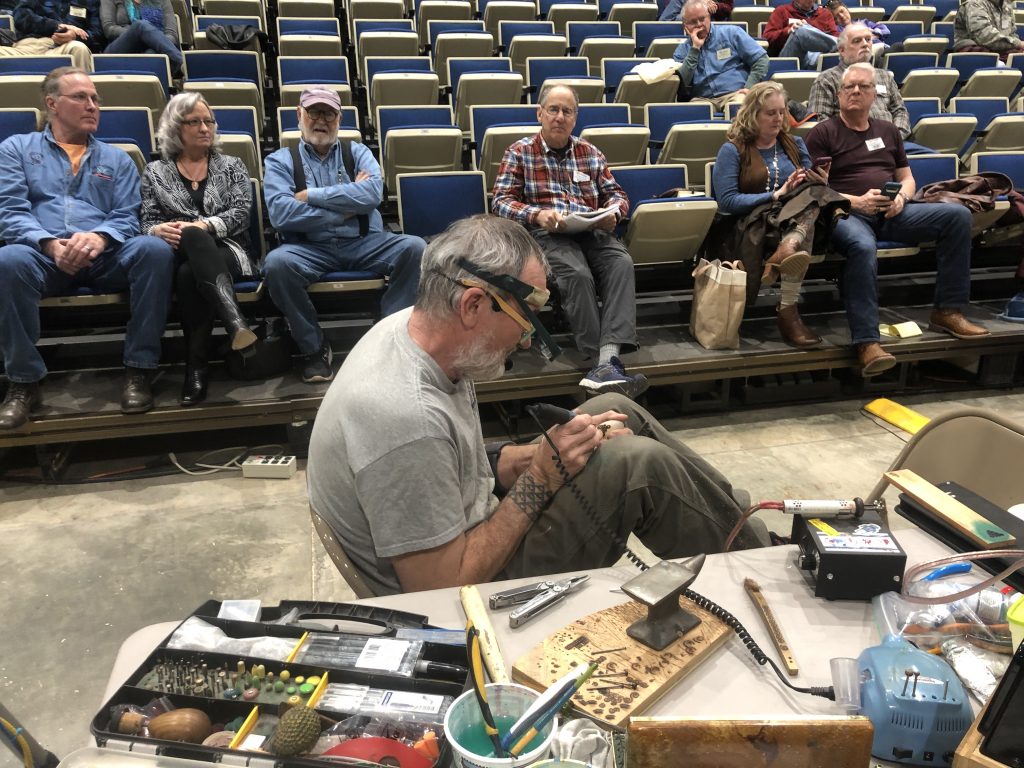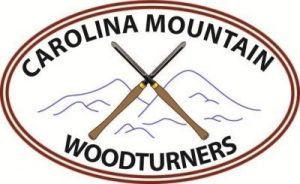The Carolina Mountain Woodturners was fortunately to have Graeme Priddle and Melissa Engler demonstrate at our last in-person meeting on February 15, 2020.

The demonstration began with Graeme turning what would later become an ammonite bowl.
He began by talking about safety first. He mounted the wood directly on the chuck and then used the tailstock without the live center as a jam, demonstrating that the sharp point can split the wood. Plus it is easier to center the wood without the point. He firmly locked down the tailstock to provide the tension needed to hold the wood in place.
He leaves the tenon sometimes to double as the foot of the bowl and added that the foot should be not more than a third of the diameter of the piece. He then turned from bottom to top (base to the rim) watching the profile to shape the bowl.
He used a sheer cut to remove lumps and bumps, smoothed out the curve.
He made a series of cuts, moving up the bowl – he might use pencil to mark the lines. Once finished, he removed the bowl and turned the demonstration over to Melissa for embellishing.
Carving and burning
First she carved the curve and then carved out the shapes in the interior of the bowl. Using the woodburning tool, she created the texture. The depths of burns were just deep enough but not too deep, letting the form grow organically. She did the rim last – working up to the rim. As she worked up to rim, she pointed out that the the whole tip is hot – be careful not to touch the tip of the crisp edge. She used a brush to remove the burn – and sanding disc. She then turned the powercarver down to half speed and clean up the carving.
Painting
Melissa used golden acrylics, which uses less water and doesn’t seep into the grain, the color doesn’t go where she doesn’t want it. She used a toothbrush, medium or medium hard, and a small amount of paint. Should look matte – and then let sit overnight. The acrylic layer is the darker layer – dark blue used, then layer of milk paint and wipe back the high spots. She let the milk paint catalyze, stirring it well.
The milk paint remains in the low spots and the darker color will come through on high spots. She then used a tiny brush to clean up the areas
The bowl was then returned to the lathe, to run the oil to the edge. Finally, a vacuum chuck was used to finish the foot, tapering it down, and putting a decorative element on the bottom of the piece.
This was the last face to face demonstration the club had before we moved to providing remote demonstrations.
